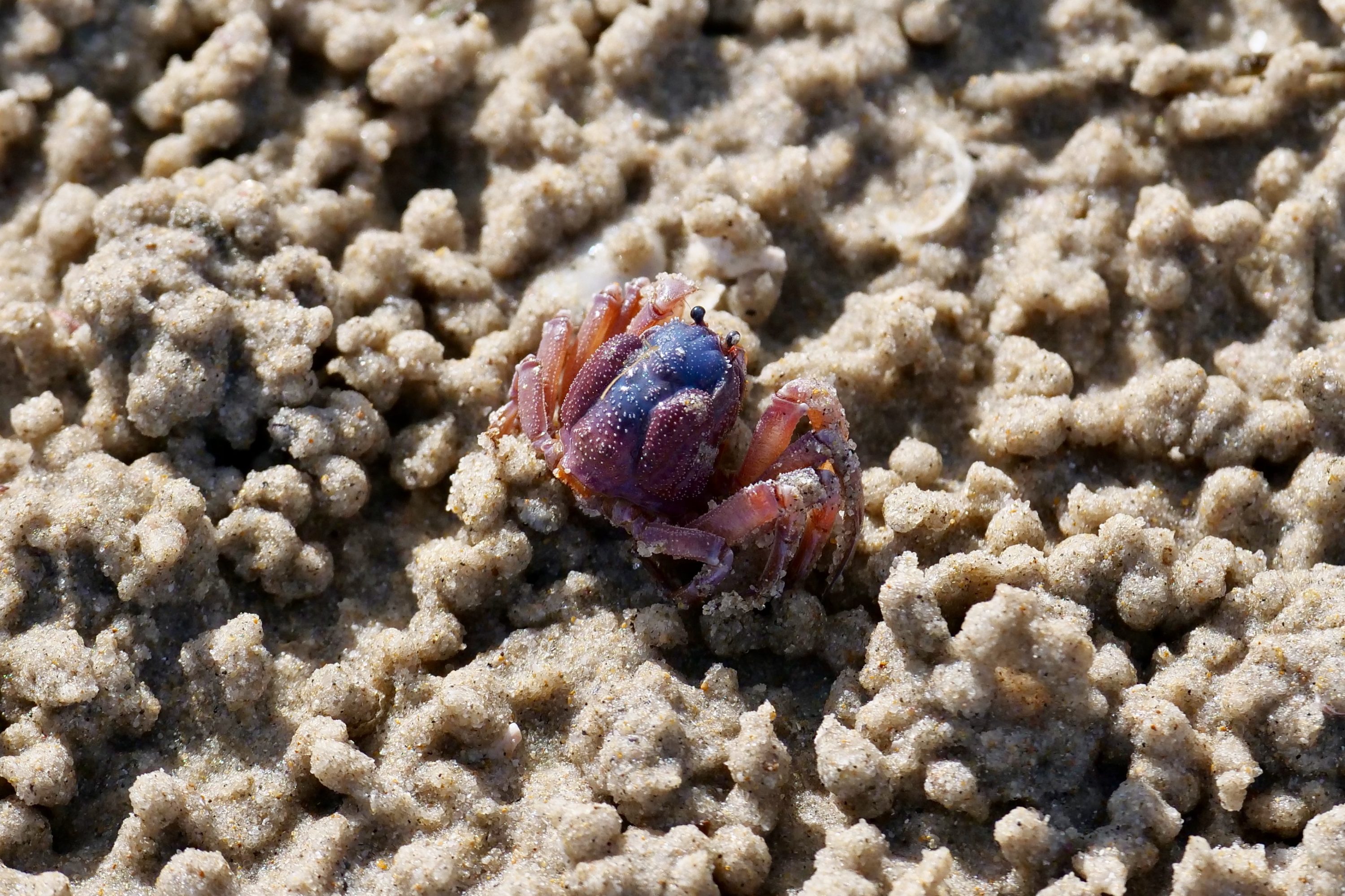(this little trilogy is best experienced in “1,2,3” order)
Remember the “apparently lifeless” appearance of the tidal flats that dominated this trilogy’s first image?
A closer view shatters that illusion…
This very small crab is a so-called “soldier crab”, probably Mictyris platycheles.
As far as my eyes could see, the two black swans in this trilogy’s second image really were the only two swans within my field of view.
The little crab at my feet was one of a rather larger assembly of his/her own kind!
Whenever our feet and/or our shadows drew close to them, the crabs rapidly “disappeared”.
However, as we walked the tidal flats, their sands were being “worked” by a great number of crabs – many thousands at least…quite probably, millions.
Marc Griffith’s video will show you exactly how soldier crabs work:
Marc has many other interesting “biodiversity shorts” here.
A few suggestions which may help you (and your camera) see more/see more effectively, when walking in wild places:
Walk quietly.
Walk slowly.
Turn right around, often.
Look down, often.
Look up, often.
Listen.
Always carry binoculars.
Favour the first two and final two hours of daylight.
Recognise that cloudy weather and rain are not necessarily dull or disappointing.
Pay very close attention to how light is playing. (if you have never really done so, I suggest you conduct two “experiments”. Conduct them early or late in the day. First, circumnavigate a leaf or flower or bush or tree, and take a sequence of many photos as you do…you may be astonished to see how enormously different are the results, even as you change your position very slightly. Then, whenever next you look across a body of placid water, take the “same” picture from a standing position, from a metre above the ground, and from ground level)
When contemplating “a splendid view to the horizon”, consider also what is much closer, right in front of you. Chances are, foreground and horizon – and earth and sky – will “speak” to each other and greatly enhance each other…if you let them.
